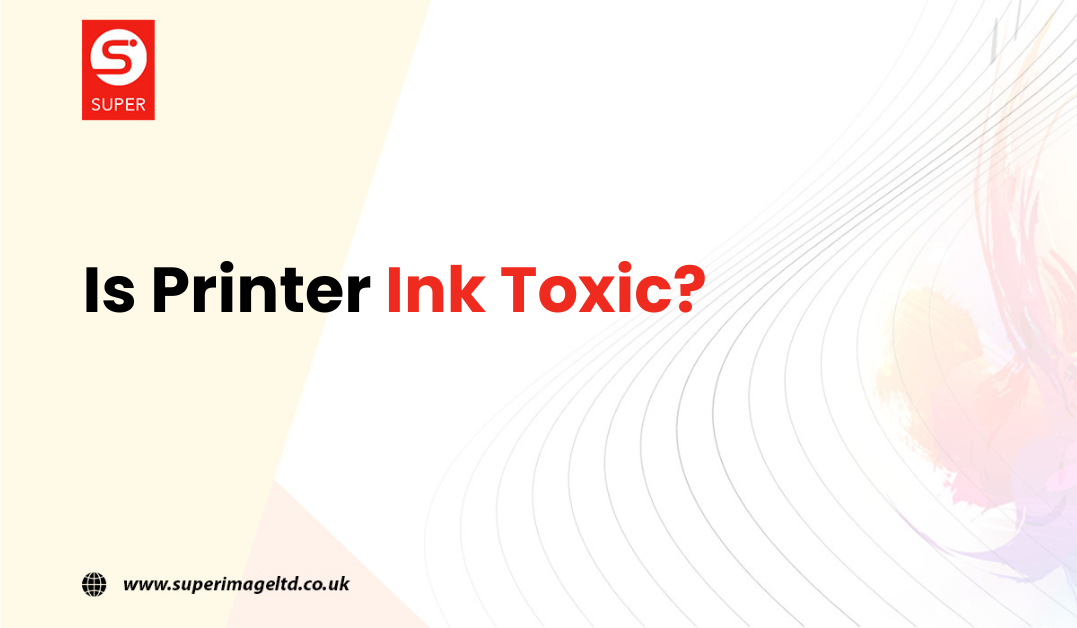While buying printer ink, all we can think of is the price and longevity of it. Anyone seldom pays heed to its quality concerning the skin. Depending on the nature of their use, looking at these metrics is not wrong. However, along with them, we should also be considering if the ink is toxic or not.
Take, for instance, you might face a spillage of ink on your clothes and skin, this question will cross your mind: Is printer ink toxic? And, the answer may vary.
Generally, printer ink made by a reliable brand and OEM technology is non-toxic. But buying low-quality ink with toxic chemicals should be a concern for you when it comes to toxicity.
Ink spillage on the skin either while fitting the cartridge in your printer or removing it is a common process. But, when it wreaks havoc on your skin, you must get conscious and find out whether your ink is harmful or not.
The root cause of the toxicity lies in the composition of your ink. Let’s discover what are the components used in it.
Composition of Ink

Even in the age of digital media, the demand for printers cannot be denied. These are the staple of every workplace and even homes.
Depending upon the usability, there are different ingredients that make up a quality ink. Each brand opts for a specific set of approaches to make printer ink, but you can expect these to be present in your ink, generally:
- Pigment
- Opacifiers
- Alcohol
- Water
- Binder
- Ethylene glycol
- Water drying agents
- Solvents
All these ingredients are mixed in different ratios to achieve color and consistency.
Now, as these core ingredients are not toxic to touch, the usual spillage of ink should not alarm you. However, there are more details to it.
If you want to sell your unused ink for cash, click here!
Is Printer ink toxic to the skin?
Printer ink is generally harmless as it is manufactured under strict guidelines. But, not all the inks are the same. Each brand is trying its best to use better ingredients and make its ink stand out. However, each of the printers has its own requirements.
For instance, a general inkjet printer uses ink that is made up of water, alcohol, ethylene glycol, and a few more additives that cause no harm. In contrast to that, the laser printer uses toners with heavy ingredients that can cause harm to your skin, if exposed for a longer period of time. Therefore, it is suggested to avoid direct contact with ink while filling the cartridges.
There is another thing that needs your consideration. If you are using a broken cartridge, you have not cleaned it for a while or you have placed it in a non-ventilated area, in that case, fumes can be formed of ink. Make sure that your skin is not exposed to it if this happens.
If you are handling the ink with proper care and know all the precautions, you do not have to worry about the toxicity of the ink cartridges to your skin.
Is printer ink Edible?
Drinking or eating printers’ ink, even in small amounts, is not recommended by WHO because it can cause harm to the body. If it is done by children, they must drink plenty of water after that and consult a doctor immediately.
How to Minimize Hazards Regarding Printer Inks?
Following are a few precautions to keep the ink and yourself safe:
- Firstly, consider buying ink or cartridges from the authentic brand, not of cheap quality made of generic formulas.
- To maintain an equal concentration of ink and to avoid the formation of fumes, it is necessary to put the ink in a ventilated area.
- Go for recycling the ink cartridges or the toners instead of disposing of them.
- While filling cartridges with ink, it is a good measure to wear gloves.
- Cover the ink and place it out of the reach of the children.
- While handling, read the Material Safety Data Sheet.
Conclusion
The first prerequisite of buying ink is to purchase it from a reputable supplier. After that, your duties are reduced and you just have to handle it with good care while refilling. Wear a pair of gloves for your safety. At the end of the day, prevention is better than cure.

You really make it seem really easy together with
your presentation but I in finding this matter to be
really something which I think I might never understand.
It sort of feels too complicated and extremely large for me.
I am looking ahead in your next put up, I’ll try
to get the hold of it! Escape rooms hub
Very interesting details you have noted, thank you for posting.!